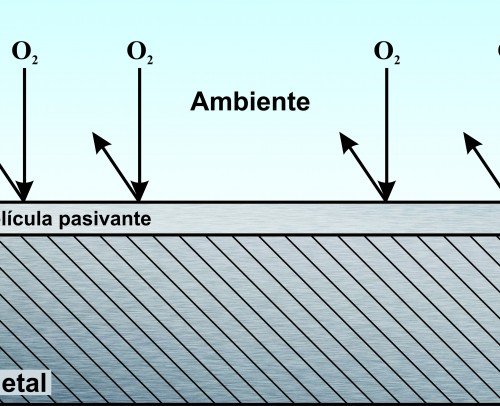Hardware for aluminum enclosures
Inox and Inox
One of our window hardware suppliers helps us understand the differences between some of the steels used for hardware.
Commonly in the product technical sheets we find written "Stainless Steel", but the only word "Inox" does not guarantee and does not specify real capacity to withstand the atmospheric agents of the component.
What is an INOX steel?
Stainless steels are alloys based on iron, chromium and carbon enriched with other elements such as nickel, molybdenum, silicon, titanium, etc. Its characteristic is its high resistance to weathering corrosion such as having the possibility of "self-passivation" which is to become covered with an invisible and extremely thin oxide layer, the passivating film is what protects the underlying metal from the corrosion. That by virtue of an amount of chromium (Cr) in the composition of the alloy it must be a minimum of 10.5%, in accordance with the provisions of the EN 10020 standard. The presence of other elements to help improve certain characteristics For example, nickel and molybdenum contribute to increased corrosion resistance.
There is Inox and Inox
Stainless steel has become a widely used material and is undoubtedly one of the most durable materials. However, not all “stainless” have the same characteristics, therefore, it is of great importance to choose the right material depending on the use. This cannot be the domain of an expert's knowledge.
The choice should be based on the intended use, the environment and mechanical strength requirements.
The most commonly used steels in our sector are 304 and 430 (AISI). Two similar typologies but with important differences in terms of corrosion resistance
Austenitic stainless steel (1.4301) (AISI 304)
Non-magnetic in the annealed state, slightly magnetic when cold worked; Carbon between 0.015% and 0.10%, Chromium between 16% and 18%, Nickel from 8% to 13%, Molybdenum from 0% to 4%. The presence of nickel improves corrosion resistance and makes the steel more ductile. The presence of molybdenum further strengthens the resistance to corrosion by acids. All types of stainless steel are provided with corrosion resistance, but austenitic steels are the best from this point of view, and are the most widely used in construction applications. These high chromium steels are ductile and tough.
Ferritic Stainless Steel (1.4016) (AISI 430)
Ferromagnetic; chromium from 10.5% to 29%, molybdenum from 0% to 4%.
Widely used in the automotive industry, in the household appliances and in the chemical industry.
Corrosion resistance characteristics are good at room temperature. Good in medium corrosive conditions (in atmosphere and especially if it is subjected to frequent cleaning; fresh water; organic compounds, oil and phenol; household detergents, food substances, weak organic acids, various alkalis).
Giesse also mainly uses these two types of stainless steels, but due to their different characteristics they are chosen and used based on the type of accessory and the function of use that we expect from them.
AUSTENITIC (AISI 304)
Giesse has chosen this type of Inox for exposed accessory parts once installed on the enclosure, therefore, subject to external agents that can cause corrosion over time that can affect the function of use of the product.
Ex.
Tilt-and-turn compass: the only visible part of the installed compass is the arm and the part most exposed to atmospheric agents for many hours in the tilt position
Compasses for external opening.
Compass test result, the first AISI 304 and the second AISI 430 after 100 hours in salt spray (see attached image)
Fixing screws and studs for hinges, and components.




